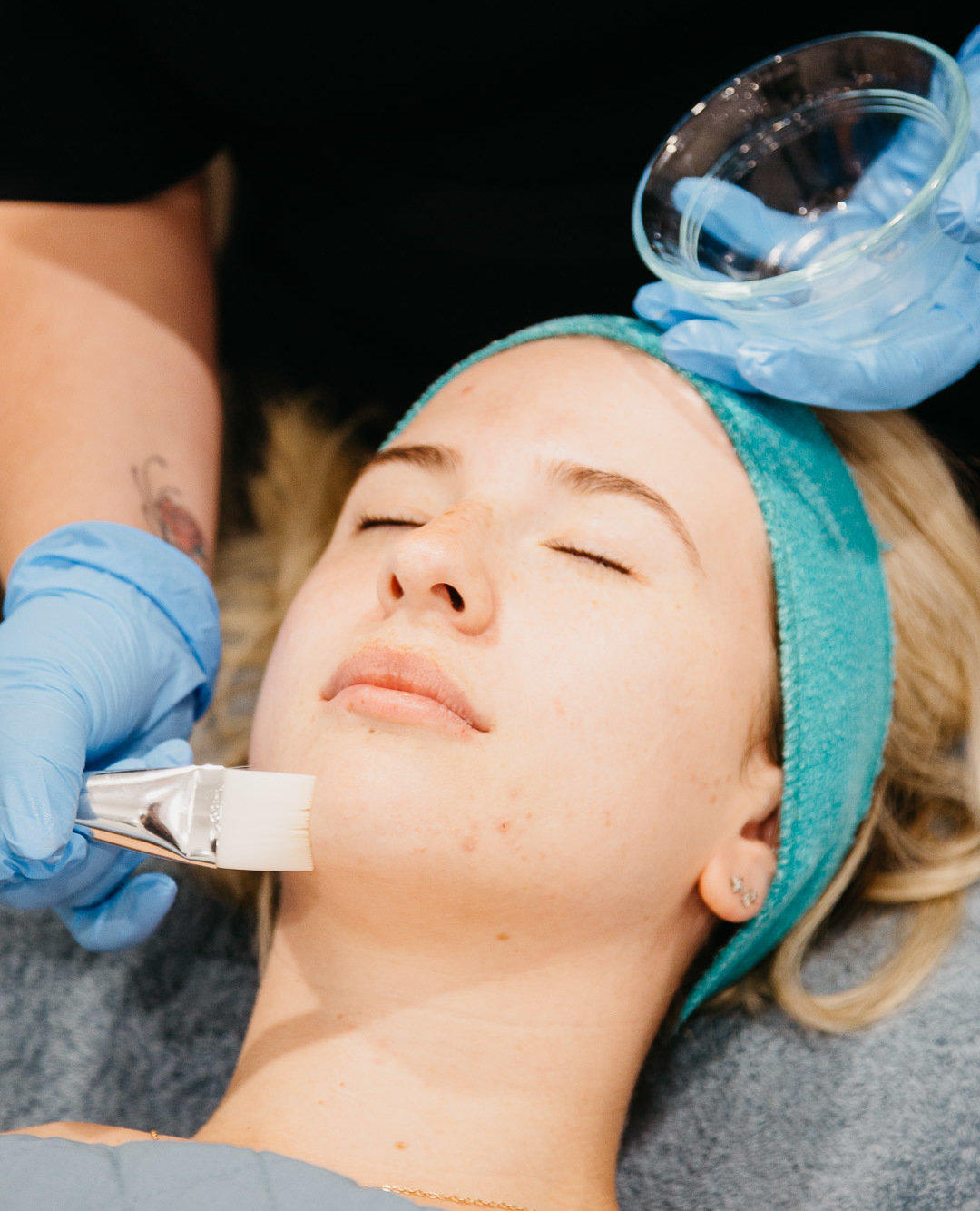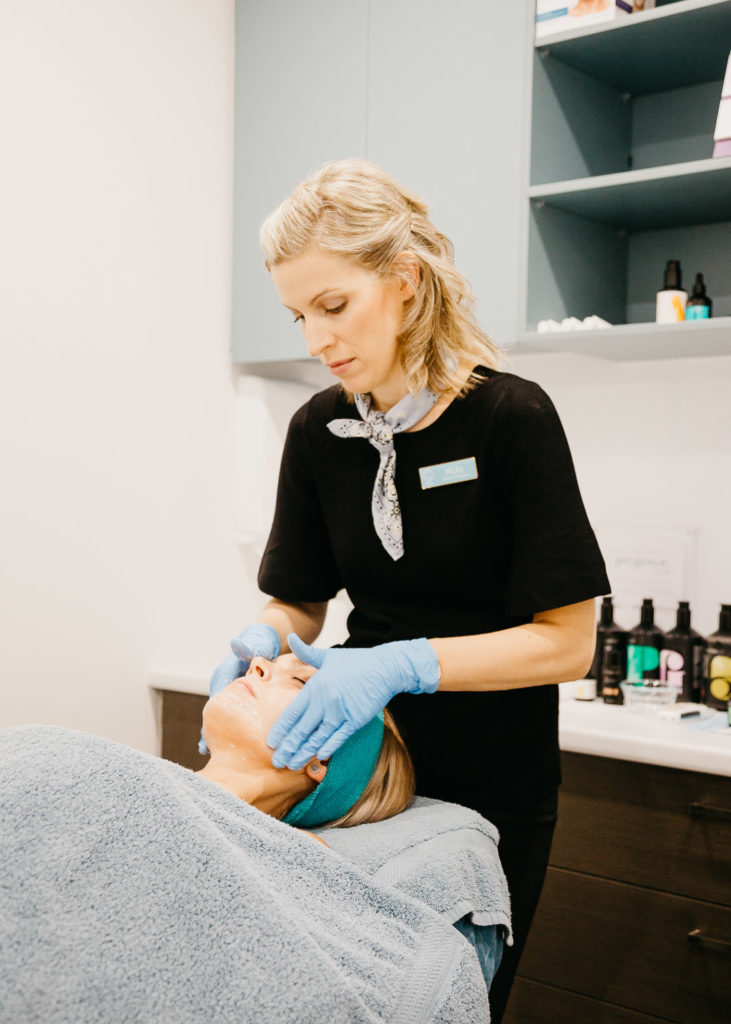
Acid Talk – What is a Chemical Peel for?
For many, their first introduction into chemical peels was via the infamous Sex in the City scene where Samantha’s red and raw face would be enough to put anyone off… but it shouldn’t!
Sure, the words chemical and peel together don’t sound all too appealing, but adding a chemical peel into your regular skin care maintenance plan can have amazing benefits for your skin. Peels are great to add some pep and sparkle back into your skin when it’s looking and feeling dull.
They work by removing the dry, dead skin cells from the top layers of skin. Smoother, glowing skin reveals itself from underneath the layers. It is a non-invasive procedure with treatments topically applied on the face. The ‘chemical’ part is used for speeding up the exfoliation process.
Our therapists have answered your questions to help you become an expert before your next chemical peel.
The different types of Chemical Peels
There is no ‘one size fits all’ approach when it comes to acids and chemical peels. Customised treatments are tailored to the specific skin needs of our clients. However, as a general overview, here is a list of the most common concerns and acids used:
Dry skin – Lactic Acid for hydration and moisture.
Oily skin – Salicylic Acid for exfoliation and anti-inflammatory properties or Glycolic Acid.
Combination skin – Speak to your therapist about your main concern! There are different levels of combination skin. We will tailor the peel to suit you individually.
Sensitive skin – Salicylic Acid helps to treat inflamed and sensitive skin or Lactic Acid.
The Chemical Peel Process
Not sure what to expect from a peel? Our therapists will discuss your current skin concerns and outcomes with you. If you’re worried about some breakouts or want to boost your skin’s hydration before a big flight – let us know and we’ll create a peel to suit.
Before applying the peel, we’ll cleanse and prep your skin to make sure it’s nice and clean to start with. The peel prep does have a slight smell to it, but we normally get you to hold your breath for a few seconds to help.
Once our therapists start to apply the peel, you may notice some tingling in certain spots – this is normal, however if anything is too uncomfortable, let us know straight away.
Once the peel is applied, we’ll leave it to develop for a few minutes and then wash it off once done.
If you’re following your peel with a LED Light Therapy session (which we highly recommend), then we’ll leave you to relax under the light.
After some skincare application, you’re set and ready to face the world with your gorgeous, glowy skin!
Always follow the correct post peel or acid application instructions for skincare. We highly recommend wearing sunscreen frequently, especially after the use of acid skin care.
Can Chemical Peels be Used for Skin Conditions?
They can be used to treat a variety of skin conditions. Whether you’re looking to reduce hyper-pigmentation, open pores or skin inflammation, or improve the overall texture and hydration of your skin, a chemical peel can be customised to suit.
Some of the most common skin concerns include:
Anti-ageing
Melasma
Acne
Rosacea
Including an acid peel in your skincare regime is a great way to exfoliate the skin and remove dead skin cells. Acid peels are more effective than physical exfoliation, such as microdermabrasion, as they can be tailored to your skin concerns at the same time as exfoliation your skin.
What Peels are used at Ocean Cosmetics?
We have several chemical peels at Ocean Cosmetics available for treating all skin concerns.
At Ocean Cosmetics we use superficial chemical peels, aimed at the first few layers of skin. The depth of the peel depends on how acidic the peel is (pH), the strength of the peel and the length of time on your skin. Our peels are a light depth and exfoliate the epidermis (the outer layer of skin).
For best results, we use chemical peels in combination with other energy-based devices and cosmeceutical home care.
The main superficial peels used are:
AHAs – Alpha Hydroxy Acids
BHA – Beta Hydroxy Acid
TCA Trichloroacetic Acid
Jessners or modified Jessners
The type of peel that suits your skin will depend on your skin concerns plus your skin type. We told you it was personalised!
What is Glycolic Acid Used For?
Glycolic Acid is one of the most commonly used Alpha Hydroxy Acids (AHAs). This acid is derived from sugar cane and available in different concentrations. It repairs general photoageing (smoother, firmer, less pigmented skin) and used for acne. However, it doesn’t have the same anti-inflammatory properties as Salicylic acid.
What is a Lactic Acid Peel?
Lactic Acid is another popular AHA peel and is a popular ‘beginner’ acid as it’s very mild. It plays an essential role in skin moisturising and hydration. The use of AHA in skincare products goes back to ancient Egypt and Cleopatra.
There are rumours that Cleopatra applied sour milk on her face to enhance her youthfulness. Today, Lactic Acid is still derived from sour milk.
What Does Salicylic Acid Treat?
Salicylic Acid is the most commonly used Beta Hydroxy Acid (BHA) peel for sensitive, inflamed skin as it has the most anti-inflammatory properties out of all peels. It is used to treat acne and rosacea.
What Does TCA Mean?
TCA stands for Trichloroacetic Acid and this type of peel is mainly used for reducing pigmentation. At Ocean Cosmetics, we use a low concentration of 10-15%. It has a significant effect on the appearance of the skin and is commonly used to treat Melasma.

What Does Pyruvic Acid Do?
Pyruvic Acid converts to Lactic Acid and penetrates down to the dermis layer. This level of peel works to increase the production of collagen and elastic tissue. We recommend it for both photoageing and Melasma in a lower concentration.
Inducing exfoliation with chemical peels can result in a faster cell cycle without compromising the skin barrier. At Ocean Cosmetics we usually recommend a chemical peel before trying microdermabrasion for beginners to avoid downtime and minimise the risk of infection. We also believe that both AHAs and BHAs should be included in a good skin care routine (in minimal concentrations) for skin conditioning and prepping before a chemical peel.
We always recommend seeing a dermal therapist to discuss skincare treatment plans. There are risks associated with using facial acids. These side effects can happen if the facial acids are misused. Whether that’s a course of chemical peels in the Ocean Cosmetics clinic or adding products to your home routine, one of our therapists will be able to give you advice on what will suit your skin.
Thinking About Trying a Chemical Peel?
To make an appointment or make a no-obligation inquiry about our chemical peels at Ocean Cosmetics, call us at 6336 7250 or book an appointment with us at oceancosmetics.com.au
